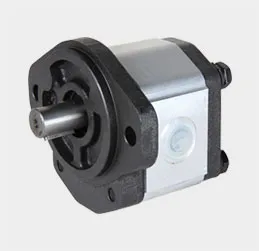Different Categories of Gravity Die Casting Techniques and Their Applications
Types of Gravity Die Casting
Gravity die casting is a metal casting process that utilizes gravitational force to fill a mold with molten metal. This technique is widely used in manufacturing due to its efficiency, precision, and ability to produce complex shapes. The process is highly favored for the production of components in various industries, including automotive, aerospace, and consumer products. The following sections will discuss the different types of gravity die casting, their applications, advantages, and disadvantages.
1. Permanent Mold Casting
Permanent mold casting involves the use of reusable metal molds, typically made from steel or iron. The molds are preheated before the molten metal is poured into them. This heating improves the flow of metal and allows for better surface finish and dimensional accuracy.
Applications This method is often used to cast smaller parts, such as housings, brackets, and other components that require high precision and good surface quality.
Advantages - Reusability of molds reduces production costs over time. - Good dimensional accuracy and surface finish. - Allows for rapid cooling, leading to fine-grain structures and improved mechanical properties.
Disadvantages - High initial setup costs due to the manufacture of durable molds. - Limited to lower melting point metals like aluminum, magnesium, and zinc.
2. Semi-Permanent Mold Casting
Semi-permanent mold casting uses molds that may not be as robust as those in permanent mold casting. Often made from lower-cost materials like sand or ceramics, these molds are designed to handle multiple pours but may need replacement after a certain number of uses.
Applications This technique is ideal for medium-sized production runs where both dimensional accuracy and surface quality are important.
Advantages - Lower initial costs compared to permanent molds. - Can accommodate a broader range of metals, including those with higher melting points.
Disadvantages - Molds have a shorter lifespan, leading to increased costs over time. - Not as precise as permanent mold casting.
Sand gravity casting employs molds made from sand. The sand mold is created by packing sand around a pattern, which is removed after the mold is formed. This method is suitable for large, complex components.
Applications Used often in custom parts for industries like automotive and foundry work, particularly when producing large volumes of cast iron or aluminum parts.
types of gravity die casting

Advantages - Highly versatile and can produce a wide range of shapes and sizes. - Lower initial cost for mold creation, especially for single or low runs.
Disadvantages - Surface finish and dimensional accuracy do not meet the standards of other gravity die casting methods. - Higher labor intensity in the mold-making process.
4. Low-Pressure Die Casting
Although not traditional gravity die casting, low-pressure die casting can be categorized alongside gravity methods due to its use of gravity in certain aspects. In this process, molten metal is poured into a mold and then is subjected to low pressure to ensure that it fills the mold completely.
Applications Commonly used in industries needing intricate designs and robust parts, such as automotive and aerospace sectors.
Advantages - Superior filling capability, leading to fewer defects. - Improved surface finish and density compared to traditional gravity casting.
Disadvantages - Higher equipment and setup costs compared to basic gravity die casting. - Complexity of the process requires skilled operators.
5. Tilt Pouring Casting
Tilt pouring casting involves tilting the mold during the pouring process, allowing molten metal to fill intricate sections of the mold effectively. This method is particularly beneficial for parts with vertical features.
Applications Utilized in creating complex shapes in sectors requiring specialized parts, including aerospace and medical devices.
Advantages - Enhanced filling of the mold, which can result in fewer defects. - Better control over metal flow.
Disadvantages - Requires specialized equipment and skilled labor. - Potentially increased cycle times.
Conclusion
Gravity die casting encompasses a variety of techniques, each with its unique advantages and disadvantages. The choice of casting method depends on production volume, part complexity, material properties, and economic considerations. As technology advances, the efficiency and capability of gravity die casting processes continue to improve, catering to an ever-evolving manufacturing landscape. Understanding the different types of gravity die casting helps manufacturers make informed decisions about which method best suits their needs, ultimately leading to improved product quality and performance.
-
Aluminium Pressure Die Casting High-Precision & Durable Solutions for Complex PartsNewsJul.08,2025
-
Top Aluminum Sand Castings Manufacturer – Precision Green Sand Castings for Industrial NeedsNewsJul.08,2025
-
Precision Lost Wax Casting Quotes – High Accuracy Custom Parts Lost Wax Precision Casting ServicesNewsJul.07,2025
-
High-Quality Sand Used for Casting - Superior Sand for Sand Casting ProcessesNewsJul.07,2025
-
China Supply High End Metal Stamping Parts Sino - Precision Manufacturing FactoryNewsJul.06,2025
-
High-Quality Automotive Investment Casting Services Precision & Sand Casting SolutionsNewsJul.06,2025















